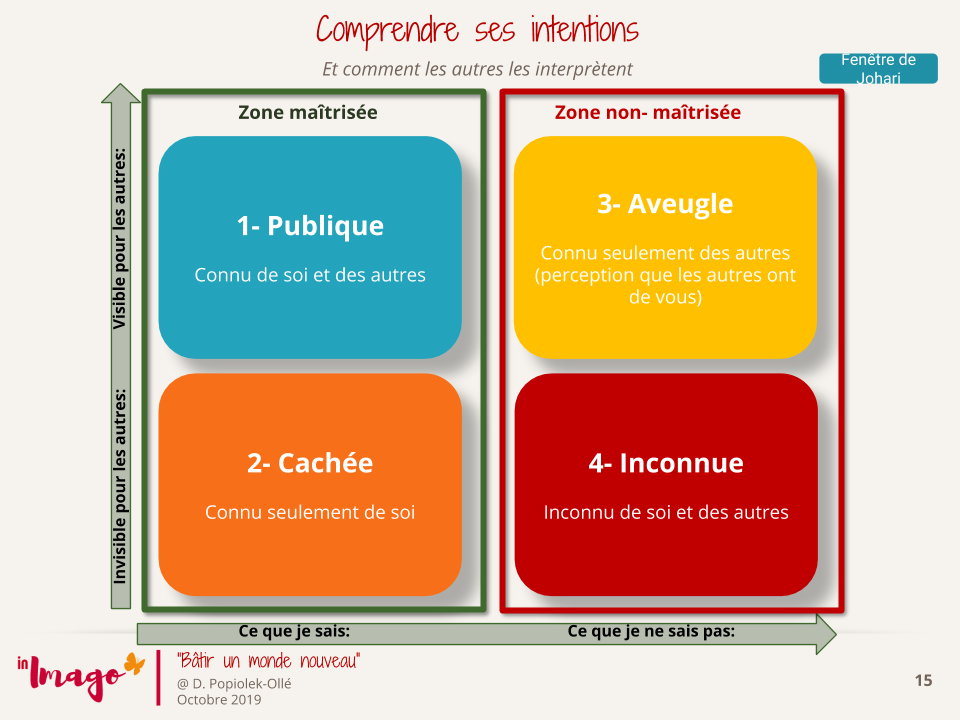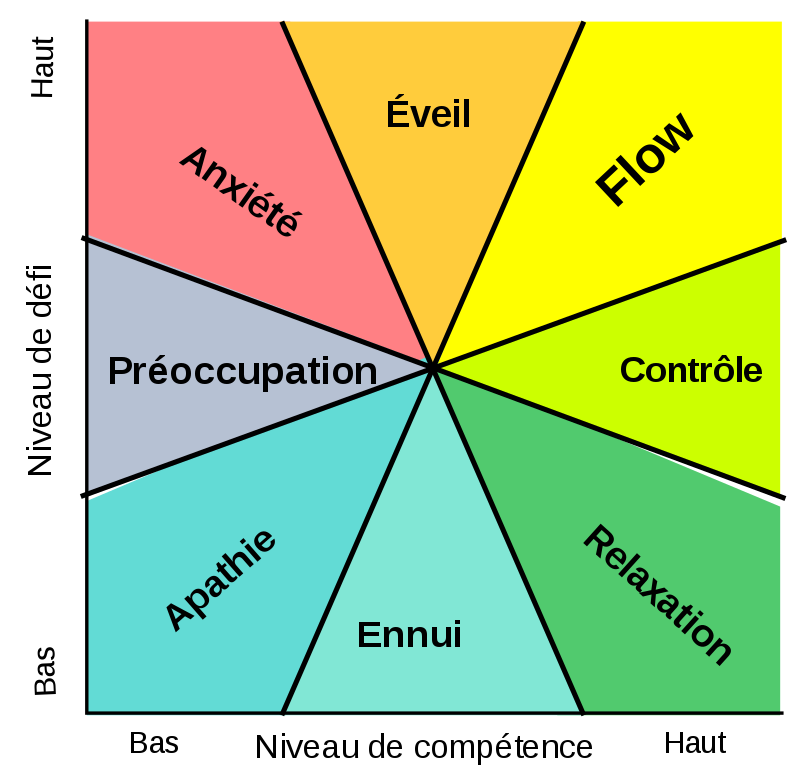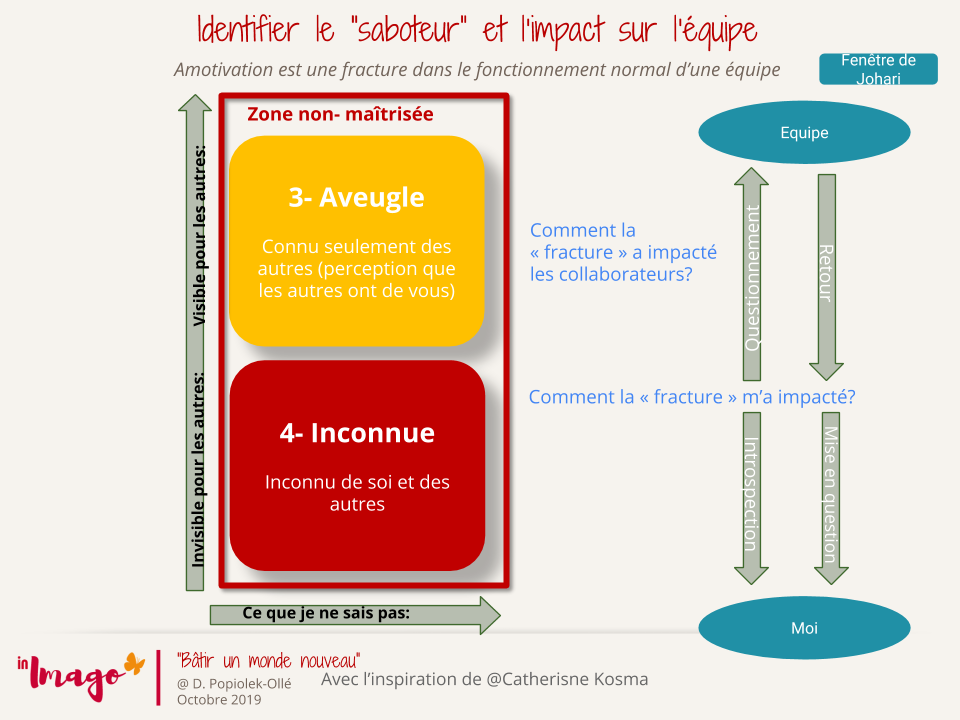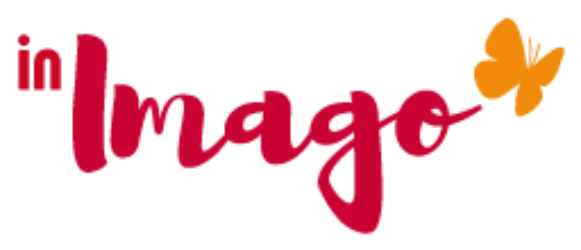The Johari Window is a matrix that was developed by Josph Luft and Harrington Ingham in 1955 from which it takes its name. It is a great personal development tool and an extremely powerful team relations decoder.
The objective of this window opening is to:
– develop confidence by restoring self-esteem.

This article aims to define an approach to unite a group, a team by supporting them in the development of their emotional intelligence.
How to use the Johari window?
Supporting a group in developing its Johari window helps build a solid group identity.
It is an analysis grid of our behavior that is often used with the creation of a coat of arms. The coat of arms allows us to question ourselves about our deep intentions, to identify our ambitions and our fears.
By presenting the coat of arms to others, it is a feeback that we collect to identify in others the perception of our strengths and weaknesses, and find our blind spots.
Reciprocal feedback allows you to talk about your areas of discomfort and together establish a sonar alert to integrate emotions and hidden intentions.
Associated with the saboteur’s game, Johari’s window allows work on the gray areas of the group. It highlights our personal fractures and those that we impose on others, by resonance.
In a professional context
In a professional context, motivation is an essential vector for the functioning of the team. Start the motivation wheel and spot how it sits deep inside you.

Johari’s window and the saboteur
Getting to know each other better is therefore essential in the establishment of efficient emotional intelligence to resolve conflicts, move forward together towards a common endeavor, adapt management and gain authenticity.
The ultimate goal is to reduce the 3 hidden-blind-unknown windows for the benefit of the public area and to collectively build the public area.
- Identify our unknown zone
We enter an unknown area, including ourselves when we are in a phase of total dissatisfaction. It generates a fracture, a temporary dysfunction in our relationships with others, and in our self-confidence.

The fracture can be caused by external events. The “covid” for example is a test of isolation, of stress which makes us lose our benchmarks of efficiency. The repeated losses of confidence, the burn-out are also a fracture. Some caused by overwork, others the fear of losing “again” invites the mind to rest while our body continues to repeat the same gestures and actions.
2- Let’s reveal the unknown area
The individual imagines himself in action but no longer produces anything, his mind striving to put him to rest. He then becomes a “saboteur” in his search for external satisfaction. But the “saboteur” seeks to reconnect with its own self-esteem, its confidence to succeed in the things it undertakes. External support is a decoy that they often use to maintain the illusion of its own effectiveness, or to paint a blackboard of the misfortunes that others cause.
Identifying that you are your own saboteur, and daring to see how this translates into the group, allows you to defuse the latter without scuttling yourself!
The saboteur game allows you to put sabotage into words and identify the impacts on the group. Becoming aware of this state of sabotage is a first step in returning to normal.
3- Favor the return
It consists in favoring the return to self-determination by encouraging its progress within the group.
Author: Dominique popiolek-Ollé, Transmutation leader, Agile & Executive Coach, Founder of In Imago, management consulting and disruptive transformation.

